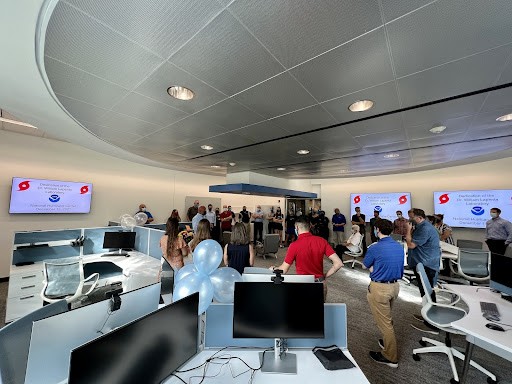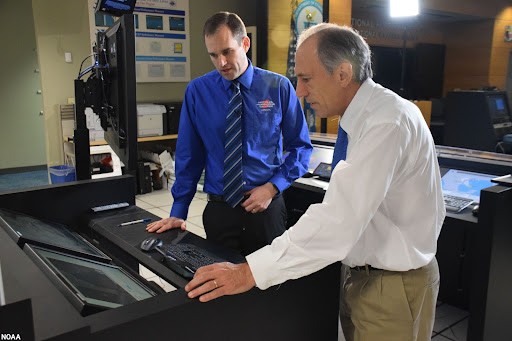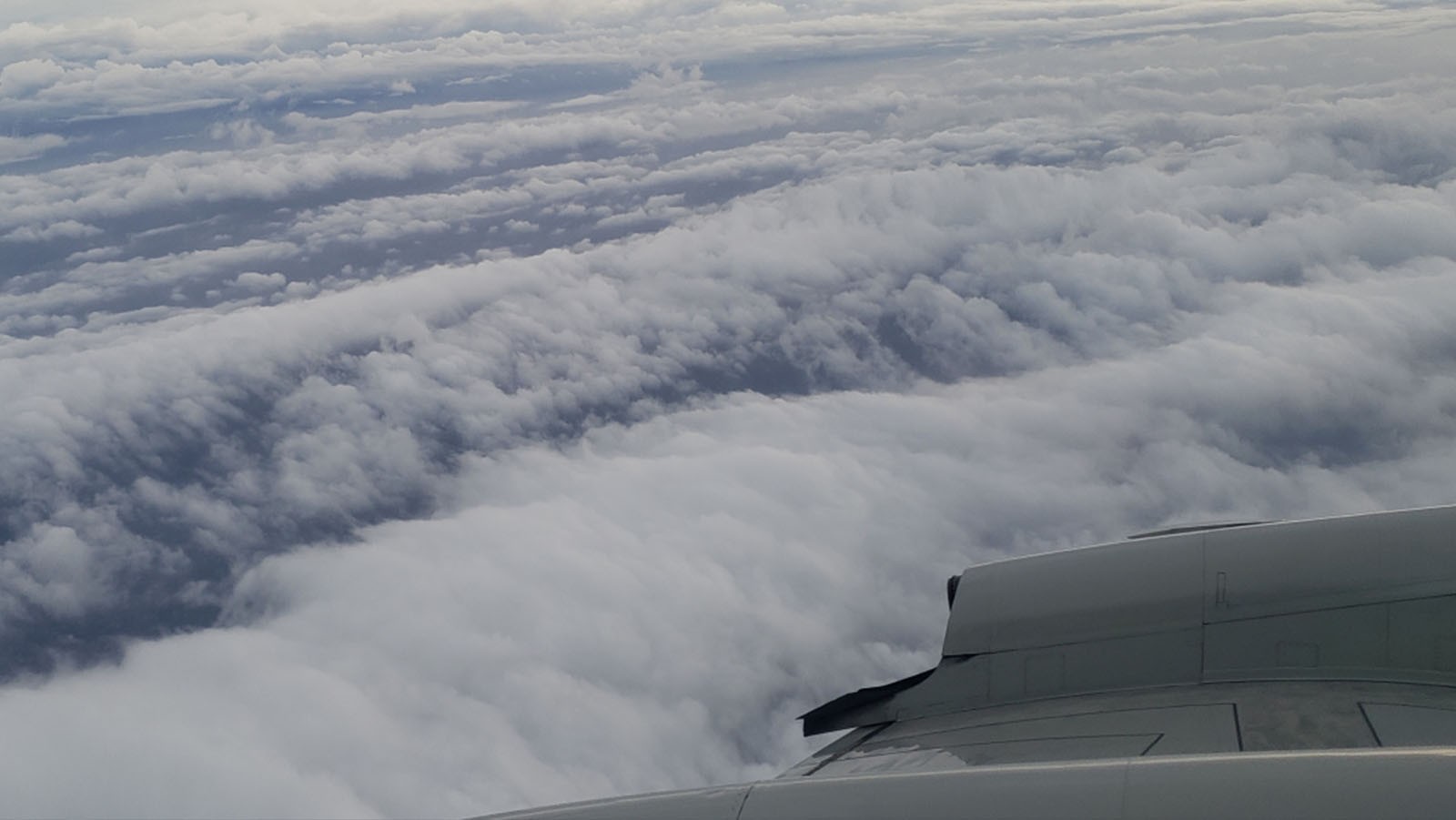
After a year and a half of concerted effort between NOAA’s National Hurricane Center (NHC), Atlantic Oceanographic and Meteorological Laboratory (AOML), and other NOAA offices, including the Weather Program Office, the Hurricane and Ocean Testbed (HOT) has been successfully launched in the newly designed William M. Lapenta Laboratory, named in memory of the late director of the National Centers for Environmental Prediction. This testbed establishes a physical and virtual collaboration space for researchers and forecasters. It is equipped with state-of-the art technology to facilitate teamwork, such as cloud-based interfaces, meeting space for both physical and virtual work, and monitors for sharing real-time observations and model forecasts during storm events. The Hurricane and Ocean Testbed will allow researchers and forecasters to explore opportunities and find solutions to common forecast challenges, resulting in better analyses and forecasts of high-impact tropical and marine weather and ocean conditions. The goal is for it to become an environment where the end-to-end process for analyses, forecasts, warnings, and response can be optimized.
With the rise of more intense storms and increased damage to populated coastal areas, improving forecast accuracy and increasing the speed of transitioning hurricane and ocean research into operations have become even more urgent. The Hurricane and Ocean Testbed will focus on integrating research from both the oceanic and atmospheric domains to target improvements in forecasts, such as hurricane intensity, rapid intensification, and dangerous ocean conditions.
Using this testbed, AOML and NHC scientists will collaborate on numerous joint projects, including how to integrate data from observing systems into better operational analyses and forecasts of tropical weather and ocean conditions. Developing the capability for forecasters to visualize and use data in real-time from AOML’s aircraft-based instruments and uncrewed systems such as flying drones, hurricane gliders, and saildrones is a key focus of AOML’s efforts to aid forecasters.

In addition to producing better forecasts of hurricane and marine conditions, participants will work to better convey the hazards associated with these events and their expected impacts to society. The effective communication of these hazards and impacts is crucial to generating the desired response from emergency managers, governments, the private sector, and society as a whole to protect life and mitigate property loss.
Participants will collaborate in an isolated test environment that mimics operations while minimizing technological barriers in order to prepare a project for operational use. Some initial projects include using Tail Doppler Radar observations from NOAA’s Hurricane Hunter aircraft to provide 3D images of the storm and swaths of surface wind speeds in real time, reducing regionally-dependent model error. The integration of Stepped Frequency Microwave Radiometer (SFMR) and dropsonde evaluations will also enable better estimates of wind speed. With a newly revitalized transition process and resources in the Hurricane and Ocean Testbed, AOML hopes to provide more end-to-end solutions that match research applications to operational needs and significantly increase end-state transitions for research focused on creating a Weather-Ready Nation.
Looking to the future, the Hurricane and Ocean Testbed will improve communication and engagement across other NOAA laboratories, academic institutions, other government agencies, and forecasters through grassroots collaborations. It will also allow a greater focus on projects that bring value to the public. This will strengthen the interactions between NOAA Research and the National Weather Service by encouraging researchers to consider how their projects can be transitioned to operations and showcasing research solutions to forecasters in an operational environment to better evaluate their merit. AOML and NHC look forward to supporting the success of the testbed and are ready to interface with other NOAA offices to bring more value to the operational forecast community.
